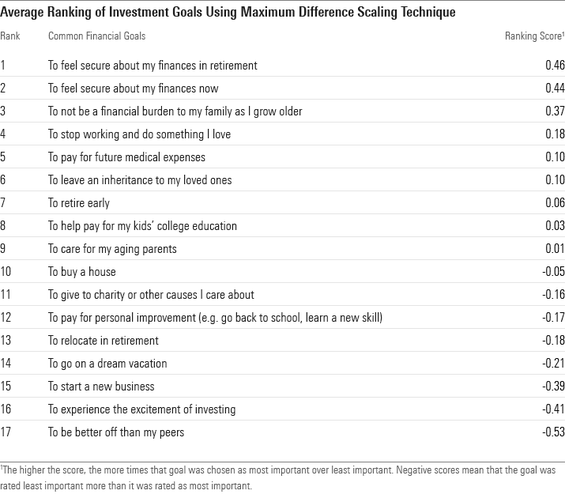For clients to make the most of goals-based financial planning, they need to understand two things: their true investment goals and how to prioritize them. This approach to financial planning can lead to an increase in client wealth of more than 15%, but our research has found that clients often have trouble recognizing and planning for these goals on their own.
In a previous blog post, we talked about how advisors can use a behavioral nudge to help clients achieve the first step, which is identifying investment goals that encapsulate their motivations and preferences. Once those are established, the question becomes how to prioritize them.
Our research suggests a promising technique for how advisors can help clients manage multigoal situations and uncover their preferences. Advisors can decide how to best allocate resources to keep clients motivated and connected to their goals.
The power of different ranking techniques to help prioritize financial goals
Conventionally, advisors work to help clients prioritize financial goals by asking them to rank their goals in order of importance. This technique is easy to implement, but research shows it may not generate accurate, consistent results.
To evaluate if an advanced technique could more effectively help investors prioritize goals, we experimentally compared the conventional approach with Maximum Difference Scaling. In this technique, participants were presented with several subsets of items and asked to rank only the most and least important. A formula was then used to tease out their preferences based on their answers.
For this research, participants were randomly assigned to one of the prioritization techniques, and then the groups’ average rankings were compared.
How to prioritize financial goals and make better allocation decisions
Contrary to previous research, this experiment found the techniques yielded similar results, with a correlation of 0.89 between the average rankings. Simply asking clients to rank their goals in order of importance does effectively uncover their preferences; however, Maximum Difference Scaling offers a few additional insights.
While both techniques can show the average sequential order of the goals, the ranking score produced by the Maximum Difference Scaling data quantifies how much more important one goal is than another.
For instance, our results indicate that the ranking score of the financial goal “To not be a financial burden to my family as I grow older” was about twice that of “To stop working and do something I love” (0.37 versus 0.18). This suggests that on average people value the goal of avoiding being a financial burden to their family as they age twice as much as they desire to stop working and pursue their interests. The chart below provides the full list of rankings.

Since many investors have more than one goal and tend to consider them all equally when asked, it can be difficult for advisors to know which ones to focus on, especially given limited resources.
The Maximum Difference Scaling technique can help investors understand their preferences to determine which goals deserve more attention and which can be stretch goals. For advisors, these new insights can help them decide how much to allocate to each goal given its importance to the client.
Although the Maximum Difference Scaling ranking technique may be harder for advisors to implement, this research shows a possible step forward for goal prioritization in financial planning. In our full research paper we discuss other ideas for making the most of goal planning and provide a behaviorally designed worksheet that can help advisors initiate a goal conversation with their clients.
Learn about how Goal Bridge can help your clients set and work toward their goals.


